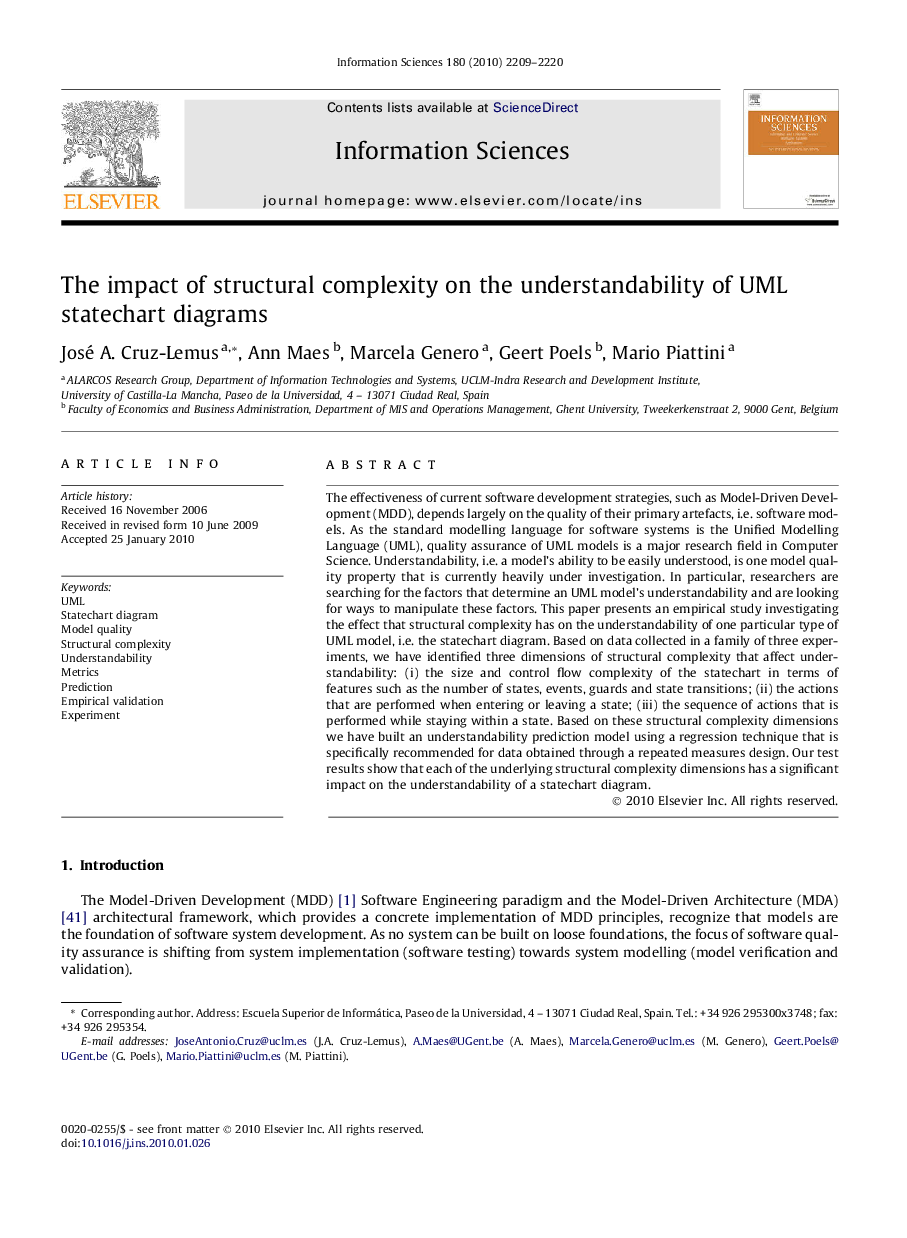| Article ID | Journal | Published Year | Pages | File Type |
|---|---|---|---|---|
| 395199 | Information Sciences | 2010 | 12 Pages |
The effectiveness of current software development strategies, such as Model-Driven Development (MDD), depends largely on the quality of their primary artefacts, i.e. software models. As the standard modelling language for software systems is the Unified Modelling Language (UML), quality assurance of UML models is a major research field in Computer Science. Understandability, i.e. a model’s ability to be easily understood, is one model quality property that is currently heavily under investigation. In particular, researchers are searching for the factors that determine an UML model’s understandability and are looking for ways to manipulate these factors. This paper presents an empirical study investigating the effect that structural complexity has on the understandability of one particular type of UML model, i.e. the statechart diagram. Based on data collected in a family of three experiments, we have identified three dimensions of structural complexity that affect understandability: (i) the size and control flow complexity of the statechart in terms of features such as the number of states, events, guards and state transitions; (ii) the actions that are performed when entering or leaving a state; (iii) the sequence of actions that is performed while staying within a state. Based on these structural complexity dimensions we have built an understandability prediction model using a regression technique that is specifically recommended for data obtained through a repeated measures design. Our test results show that each of the underlying structural complexity dimensions has a significant impact on the understandability of a statechart diagram.
